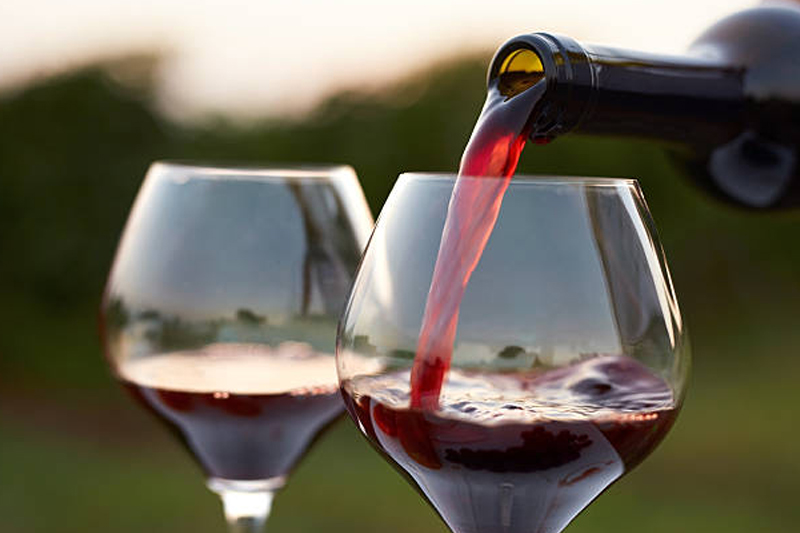Happy 2020! Due to midweek holidays, I’m writing this prior to New Year’s Eve. So, I decided to start the year by referring you to an excellent article by Christina Pickard that appeared in the Dec. 18 edition of Wine Enthusiast. Pickard is a worthwhile read for winos like me. The article deals with, among other tasting issues, “cellar palate.” I believe her article helps to explain my write-ups of what some emailers refer to as arcane wines. When you have completely read the paper and the ads, please take a look. I’m certain most will glean several good rationales for trying wine that is outside your comfort zone: www.winemag.com/2019/12/18/expand-your-palate-wine.
Primitivo is a dark-skinned grape. Not surprising to Regular Readers, these grapes produce very dark-colored wines, which often are quite tannic and high alcohol. I have read several reputable writers who claim that Primitivo and Zinfandel are the same grape. While that is accurate, we need to go the extra mile to explain that although they are the same grape, they are two distinct clones of a Croatian grape named Tribidrag or Crljenak Kastelanski. It is illegal to interchange Zin and Primitivo on labeling in the USA but allowed in Euroland. Masseria Altemura Sasseo Primitivo Salento IGT 2017, 89 McD points under $14, has potential. This needs time to mellow. I have seen the 89-point 2013 on shelves at $12, quite a bargain. Won several silvers at serious competitions. The producer is owned by Zonin, maker of well-made, fairly priced Prosecci.
Chateau Peyrassol Commanderie Rosé Cotes de Provence, McD 90 under $23, is blended of Grenache, Cinsault, Syrah, Rolle and Mourvedre, with 12 percent ABV. It is pale rose with silver glitter. The complex nose shows orchard fruit and citrus. On the crisp, dry palate, mild pie spice and leesy notes come through. Those who enjoy dry Rosé with body will be satisfied here. Try it with pasta puttanesca. Another good value Rosé, Domaine la Bernarde Les Hauts du Luc 2018, is a nice find at $15. Be careful to read the label and vintage. These folks make a wide selection of wine and several Rosé. The 2018 is an especially good choice at this price. Unlike much of the wine from the region, the grapes here are at higher elevation and cooler, allowing longer hang time and ripening. Lovely pale salmon-colored. Limestone in vineyards brings bright mineral acidity to support a complex floral bouquet of orange and strawberry. Strawberry and orange repeat on the palate with lavender. Fairly long, palate-cleansing finish.
Backsberg Estate Cellars Pinotage Rosé, from Paarl, South Africa, showed a pretty salmon pink. Cherry and strawberry nose with mint hints and a juicy tropical fruit palate. I like more acidity in my Rosé. Those who prefer fruit-driven sweetness may enjoy these, 87 McD under $15. Pinotage was cloned of Pinot Noir and Cinsault (Hermitage) in 1924. Currently it is one of South Africa’s signature grapes. Vintners struggled with this wine early on and produced everything from brown-bag to top-notch. Big-buck buyers should check out KanonKop Black Label Pinotage Stellenbosch. The 2012, ‘13 and ‘14 are terrific. The 2012 is best around $325. These single-vineyard, 60-year-old block wines are scarce since the production runs under 420 cases most years. They have won IWSC Outstanding Wine Producer trophy eight times since 1991. In 2019 they won the Warren Winiarski trophy for World’s Best Cabernet Sauvignon. Winiarski is the founder of Stags Leap in Napa and winner of the Judgement of Paris in 1976. I mention this because, although the wine name is not as well known as some of the famous Bordeaux, Burgundy and Cali reds, the quality/price relationship is excellent. For the rest of us, their Cape Winemakers Guild Pinotage label is very consistent, 91 McD. WE said 94. The 2017 can be found under $100. Needs two years but worth the wait. Cheers to all for a fabulous 2020. May you all see so clearly.














































